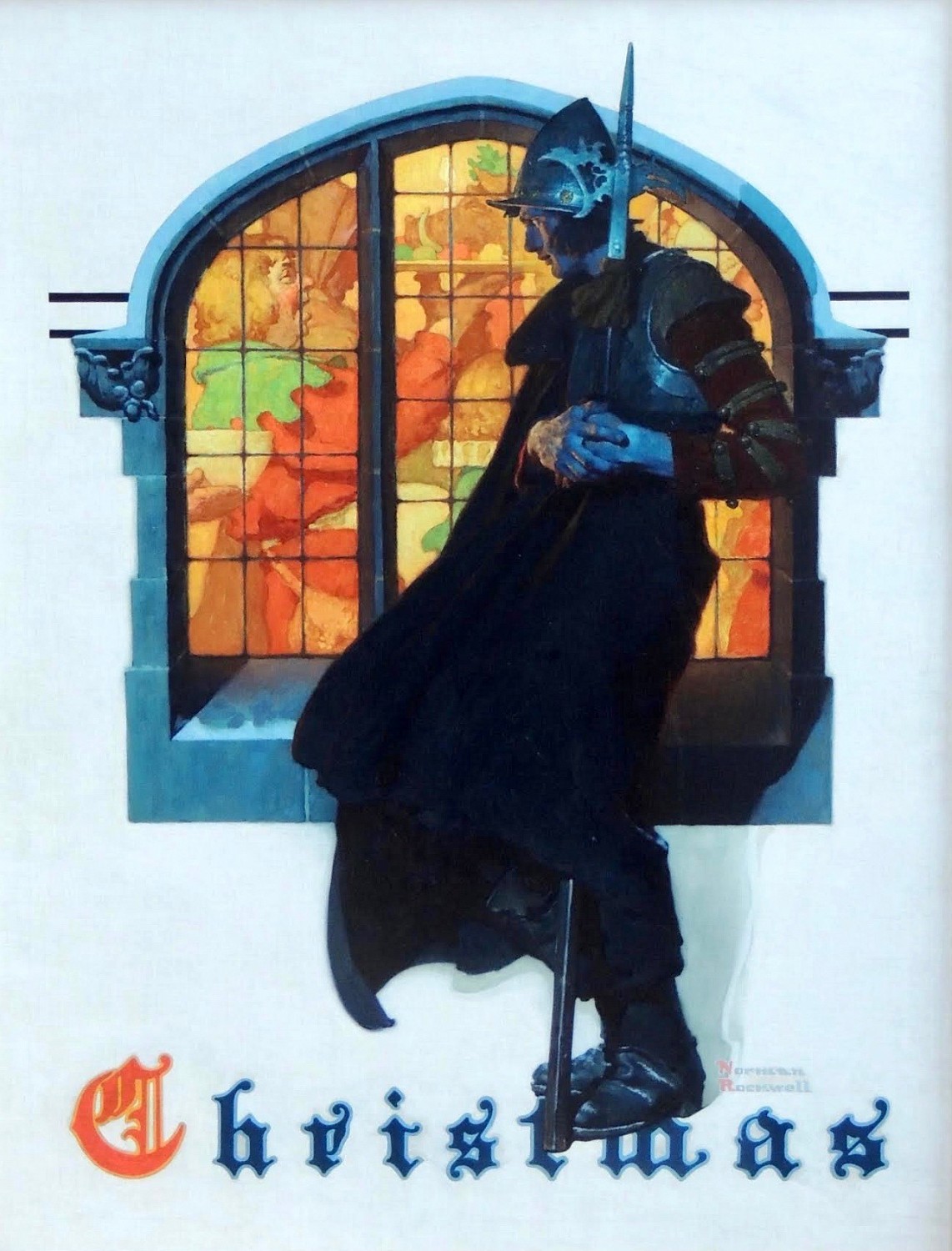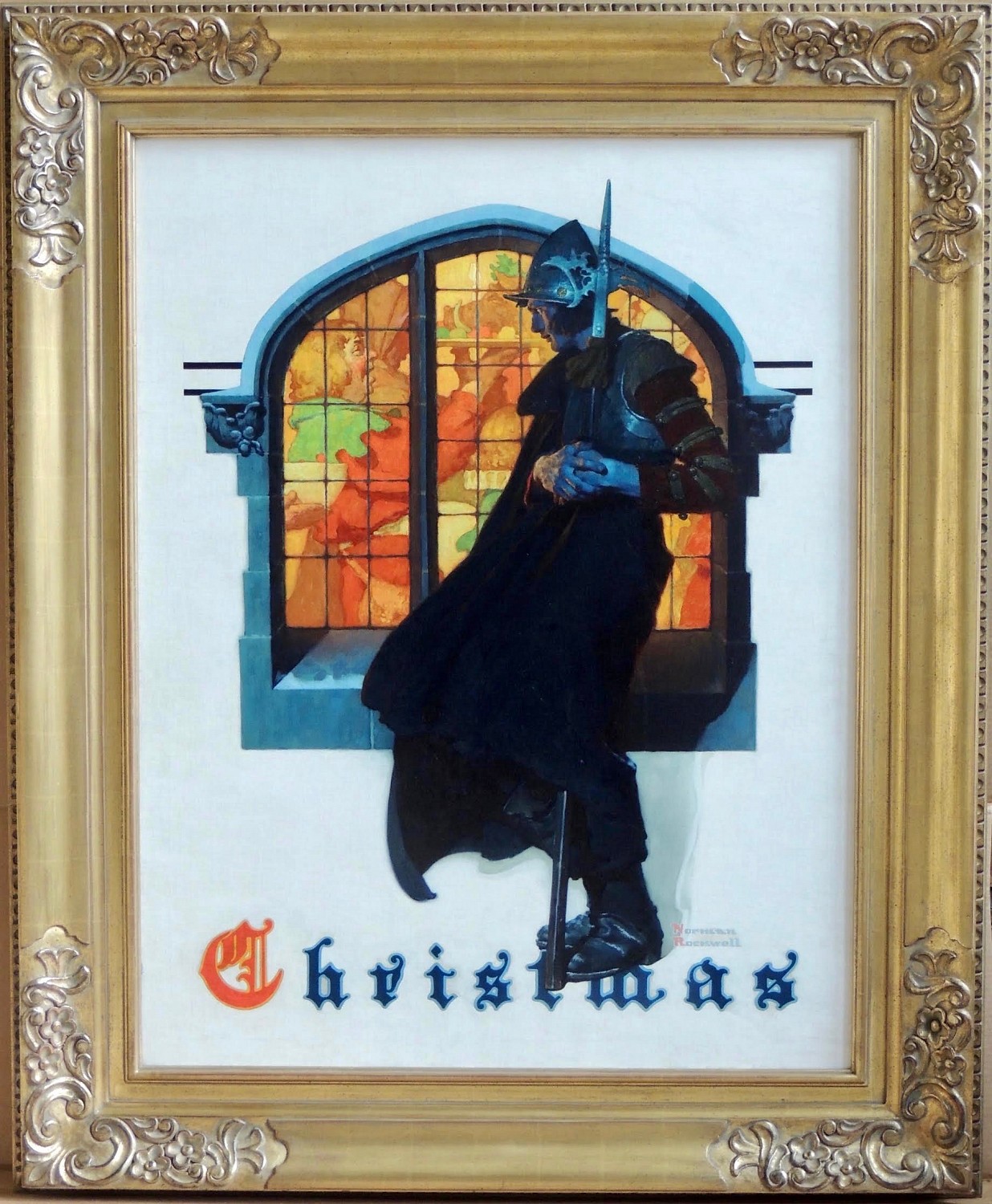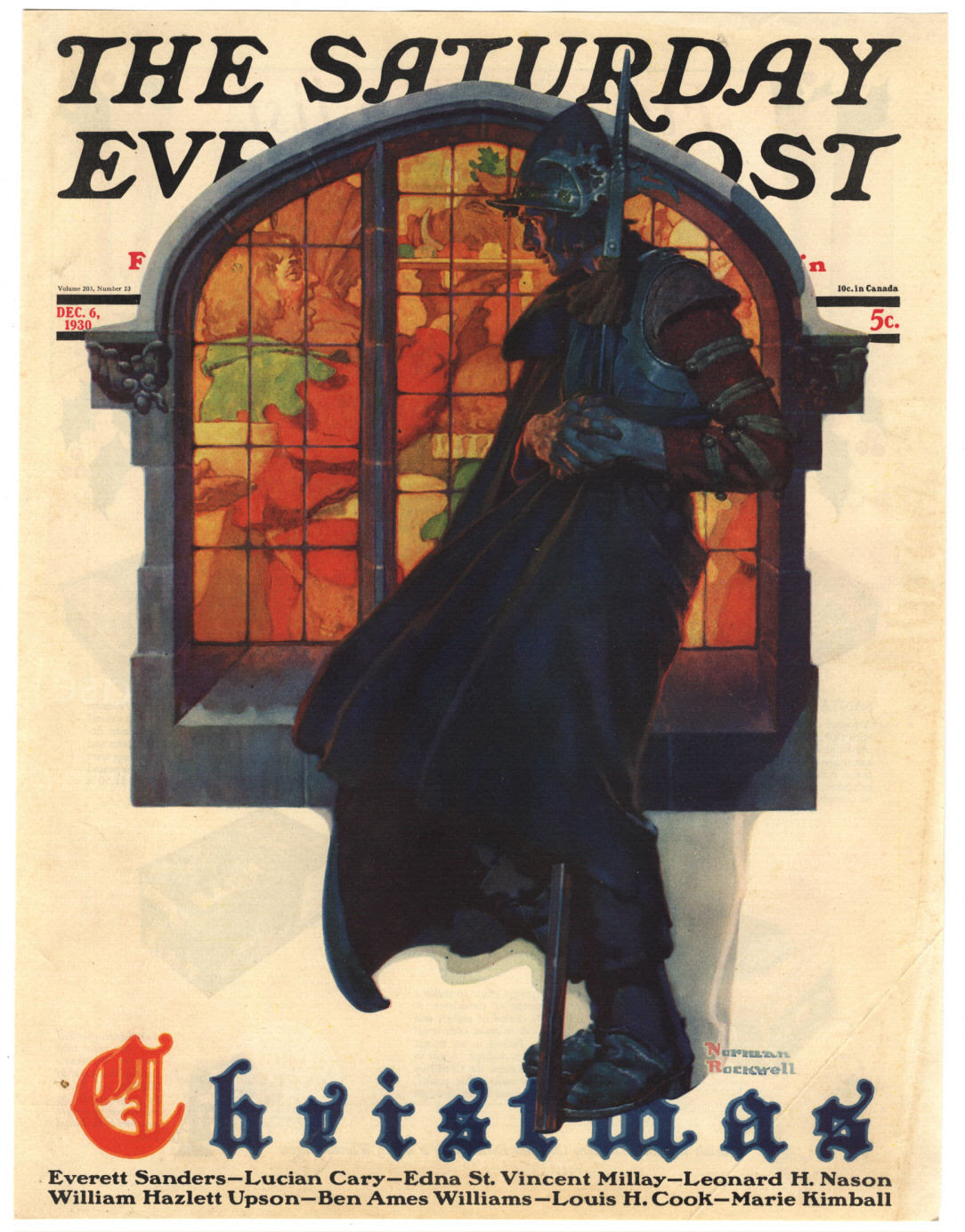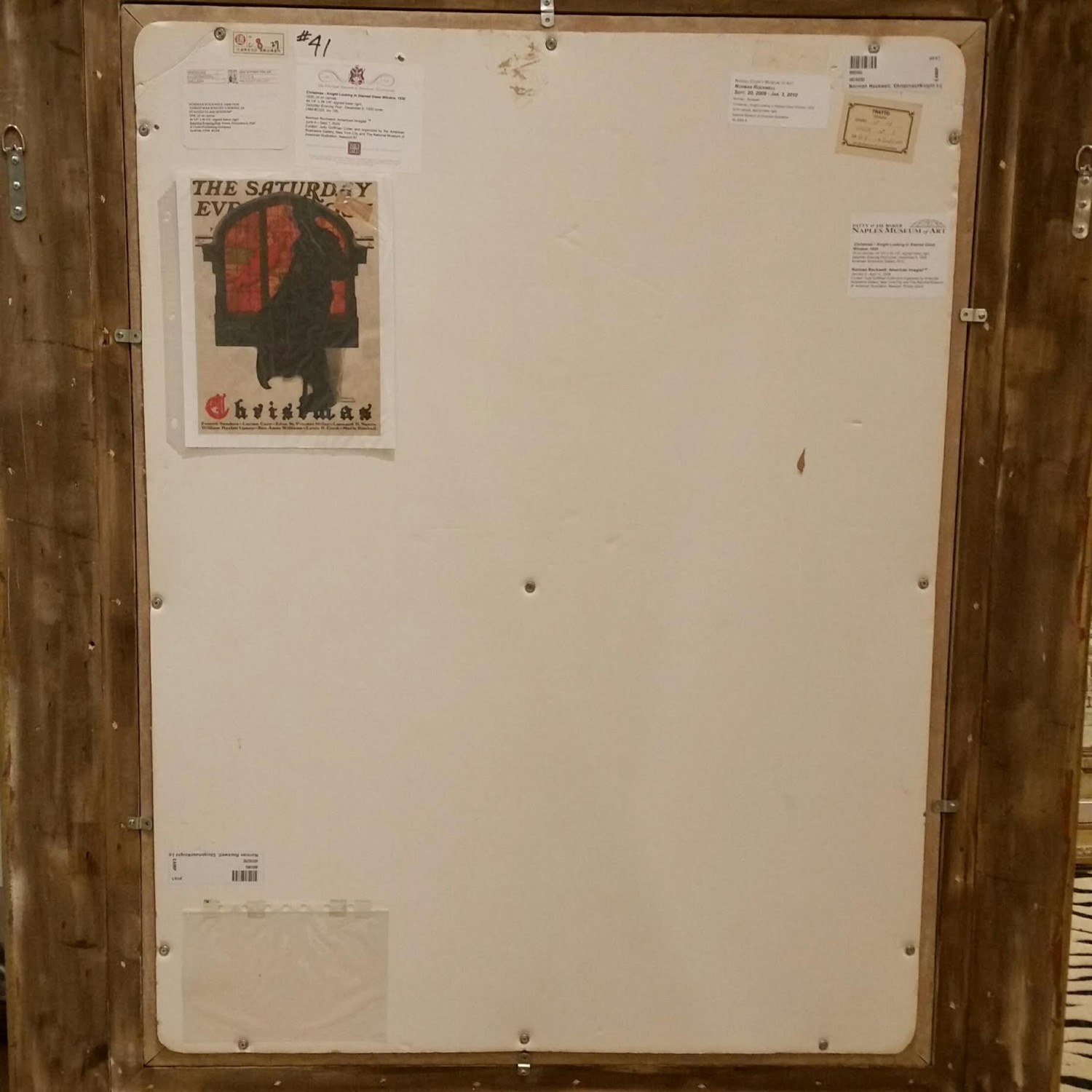"Knight Looking Through Glass" Lot no. 3427
By Norman Rockwell (1894-1978)
1930
44.25" x 34.25"
Oil on Canvas
Signed Lower Right
REQUEST PRICE
PURCHASE REQUEST
Signed Norman/Rockwell (lower right). Norman Rockwell painted Christmas: Knight Looking in Stained Glass Window for the December 6, 1930 cover of The Saturday Evening Post. Depicting a knight on guard duty who forlornly watches a jovial Christmas party from afar, the painting exemplifies the images Rockwell produced for the cover of The Post in the 1930s, a decade in which he ultimately produced nine images for the magazine. Compositionally, the painting maintains the vignette-style format that all of The Post’s artists adhered to when creating its cover art up to this period. The figure and his setting are also accompanied by the horizontal black lines of the publication’s masthead, a design feature that would disappear by 1940. Rockwell’s talent and vision undeniably aided The Post in making the transition away from its traditional layout towards a more sophisticated design as his career and association with the magazine continued. An artist with an unmatched gift for narration, he maintained the sense of humor and rigorous compositional design he had always included in his paintings, but now he achieved a new sense of naturalism as he increasingly rendered scenes in a fully articulated time and place. Works such as Christmas: Knight Looking in a Stained Glass Window foreshadow this stylistic direction. Though the compositional elements of the scene are still set against a white background, the remarkable details Rockwell includes all serve to enhance his narrative. The warm light that bathes the feasting revelers inside contrasts starkly with the cool palette he utilizes to render the knight and window, which is dusted with a layer of snow. The positioning of the knight himself, hands clutched closely to his body and subtly hunched over, as well as his billowing cloak, further indicate the setting as a bitterly cold winter evening. The effect is such that the viewer immediately recognizes Rockwell’s intended message, just one of the many reasons why the artist became the most successful artist associated with The Post over the course of its long and storied history.
Tokyo, Japan, Isetan Museum of Art; Osaka, Japan, Daimaru Museum; Nagoya, Japan, Matsuzakaya Art Museum, Norman Rockwell, February-August 1992, no. 27, p. 128, illustrated p. 62 Naples, Florida, Naples Museum of Art; Newport, Rhode Island, National Museum of American Illustration; Roslyn Harbor, New York, Nassau County Museum of Art; Oshkosh, Wisconsin, Paine Art Center and Gardens, Norman Rockwell: American Imagist, January 2009-September 2010 Newport, Rhode Island, National Museum of American Illustration, Norman Rockwell and His Mentor J.C. Leyendecker, July 2010-April 2011 London, England, Dulwich Picture Gallery, Norman Rockwell's America... In England, December 2010-March 2011, pp. 170-71, illustrated Birmingham, Alabama, Birmingham Museum of Art, Norman Rockwell's America, September 2012-January 2013, pp. 82-83, illustrated Newport, Rhode Island, National Museum of American Illustration, Norman Rockwell and His Contemporaries, May 2014-September 2015, p. 131, illustrated
Explore related art collections: $100,000 & Above / Saturday Evening Post Covers / Christmas/ Holiday
See all original artwork by Norman Rockwell
ABOUT THE ARTIST
The pictures of Norman Perceval Rockwell (1894-1978) were recognized and enjoyed by almost everybody in America. The cover of The Saturday Evening Post was his showcase for over forty years, giving him an audience larger than that of any other artist in history. Over the years, he depicted there a unique collection of Americana, a series of vignettes of remarkable warmth and humor. In addition, he painted a great number of pictures for story illustrations, advertising campaigns, posters, calendars and books.
As his personal contribution during World War II, Rockwell painted the famous “Four Freedoms” posters, symbolizing for millions the war aims as described by President Franklin Roosevelt. One version of his “Freedom of Speech” painting is in the collection of the Metropolitan Museum of Art.
Rockwell left high school to attend classes at the National Academy of Design, and later studied under Thomas Fogarty and George Bridgeman at the Art Students League in New York. His two greatest influences were the completely opposite titans Howard Pyle and J.C Leyendecker.
His early illustrations were done for St. Nicholas magazine and other juvenile publications. He sold his first cover painting to the Post in 1916, and ended up doing over 300 more. Presidents Eisenhower, Kennedy, and Johnson sat for him for portraits, and he painted other world figures, including Nassar of Egypt and Nehru of India.
An important museum has been established in Stockbridge, Massachusetts, where he maintained his studio. Each year, tens of thousands visit the largest collection of his original paintings extant.







